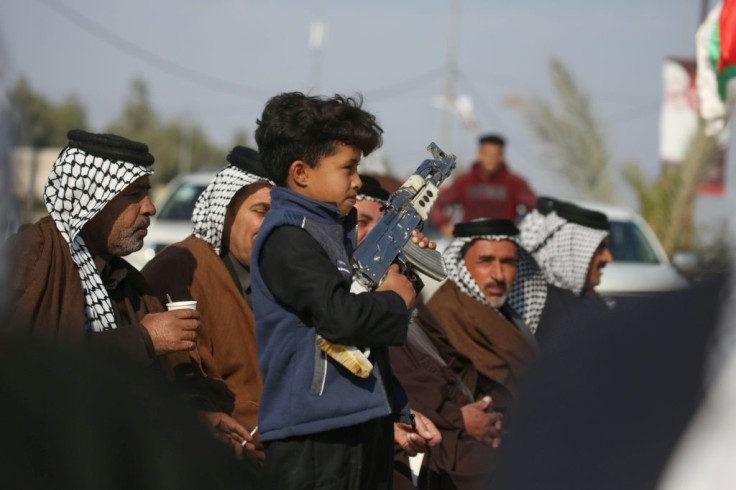Iraqis Want US Troops To Leave Their Country, But Fear Of ISIS Means That Won't Happen Soon

KEY POINTS
- Several thousand U.S. troops remain in Iraq
- As recent as in October, Iraq was not allowing U.S. troops returning from Syria to stay there
- Widespread popular protests in Iraq have masked the involvement of other governments
The Pentagon made very clear its decision to maintain troops in Iraq last Thursday, despite the ouster of the ISIS from wide swathe of territory it once controlled.
Not everyone wants U.S. troops in Iraq, and the feelings have been made clear by a protesting chunk of the country's population, something that the U.S. military has not failed to monitor and address.
The number of U.S. troops stationed in Iraq is around 5,000 but the number of troops in the theater is closer to 100,000. This is a huge decrease from the peak of the war when there were 325,000 U.S. troops in the area, according to a report by the Council On Foreign Relations from 2005.
According to John C. Rood, a national security policymaker working under the Department of Defense, the ISIS, is an ever-looming threat, and U.S. troops will ensure that they do not grow any bolder and reclaim footholds in Iraq. A significant reason for maintaining forces in the country is the military initiatives launched by the U.S. to train and build the capacity of the Iraqi troops, preparing them for future challenges and potential threats.
“We are very clear that we are there with the permission of the Iraqi government,” Rood said. “And that is a necessary condition for U.S. forces to be there.” Despite the feelings of the local population, it would appear that the U.S. military intends to stay in the country and make its presence known.
He, however, acknowledged that the Iraqi government and the people are not on the same page on the presence of U.S. troops in the country. While popular thinking is guided by feelings of national identity, the government's decision making is guided more by concerns of safety and the possible return of ISS to the territory. The ISIS threat has been kept to a minimum as the organization is mostly shattered, but that does not mean that it is gone. There are still pro-ISIS forces in the region but they have gone into hiding for fear of strikes by the U.S. military.
The dissonance between the views and growing dissent has led to the use of force by the Iraqi government to quell the protests, something that the U.S. strongly opposes. The Iraqi population does not want to be influenced by the West and its politics. While the U.S. military asserts that it has been made welcome by the Iraqi government, an October report by Military Times painted a different picture, saying U.S. troops leaving Syria do not have permission to stay in Iraq. This contradicted what Defense Secretary Mark Esper had said about those troops moving into western Iraq.
When asked about the protests in the country and media reports that Iraq no longer wants U.S. troops, Rood had this to say: “Obviously, the violence occurring in the protests and against the protestors is also something we persistently express concerns about, directly, and I did, to the Iraqi leadership.” … “We’ve made no secret of the fact we’d like to see greater restraint exercised in terms of the use of violence there.”
Sgt. Brian Libman, who is with the U.S. Army, stationed in Iraq told International Business Times that the anger among the local population is palpable and is at a level not seen since the hostilities began in the country many years ago. The protests and anger are being stoked by surrounding nations, like Iran that has used the unrest to assert influence in the region. The Shiite militias in Iraq that helped battle the ISIS are considered proxies of the Iranian regime and still are supplied and supported by the Iranians.
© Copyright IBTimes 2024. All rights reserved.





















